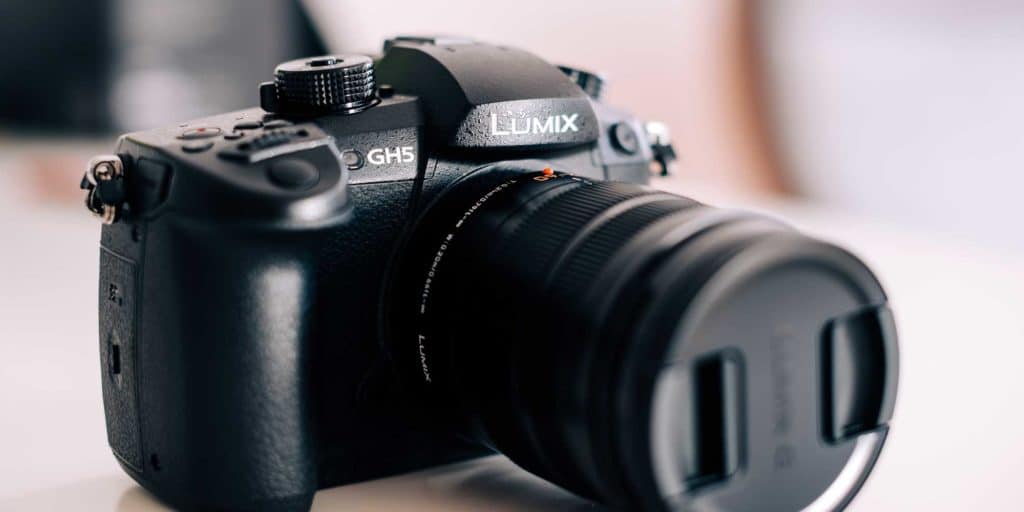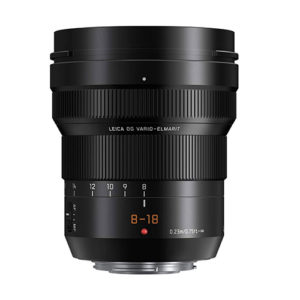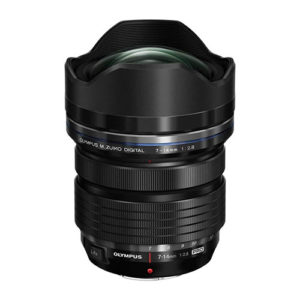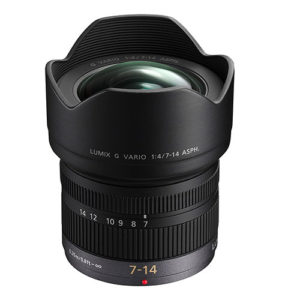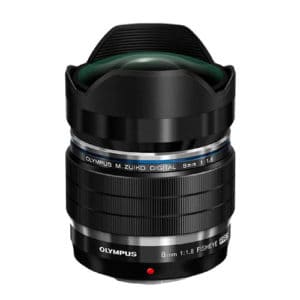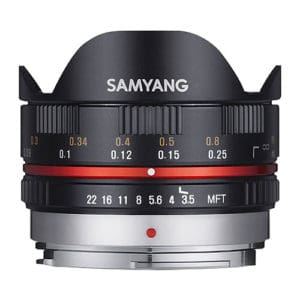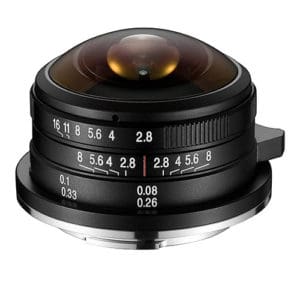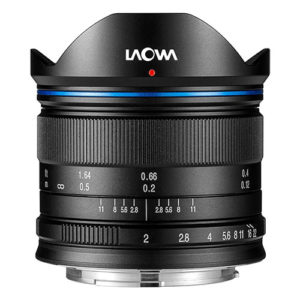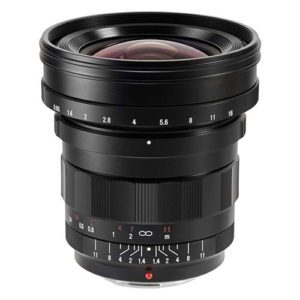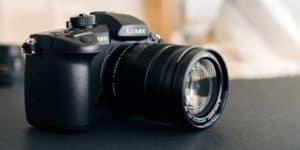The makers of Micro Four Thirds lenses have stepped up to the plate in designing some outstanding wide-angle options for the GH5.
The major brands, Panasonic and Olympus, have top-notch offerings in just about every focal length imaginable.
Plus, many other companies make manual lenses with surprisingly sharp optics and even more surprising low price tags.
Best Overall Wide Angle Zoom–Panasonic Lumix G Leica DG Vario-Elmarit 8-18 mm f/2.8-4.0
My top pick is the premium Leica-branded Panasonic Lumix wide-angle zoom.
This Leica-branded piece of glass doesn’t have a constant aperture, but for a zoom lens, the f/2.8 to f/4.0 aperture isn’t terrible.
What you get is a very useful zoom range, from 16 to 36 mm in 35 mm terms, in a small and easy to carry package.
If you need autofocus for video work, this is the lens for you.
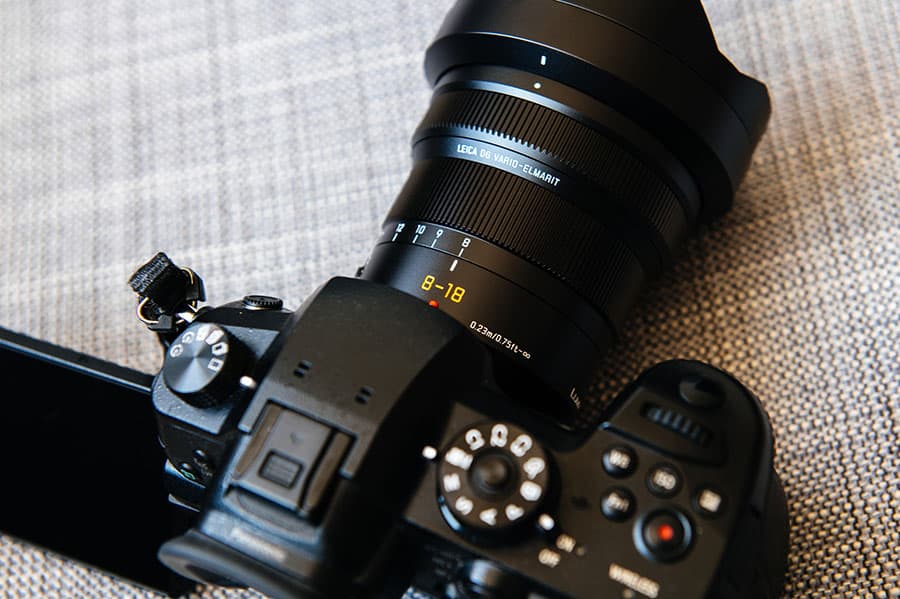
The Lumix G has a nano surface coating to reduce flares and ghosting. It’s built to work perfectly with the GH5, and its rugged construction includes splash, dust, and freeze-proofing.
Best Low-Light Zoom – Olympus M.Zuiko Digital ED 7-14 mm f/2.8 PRO
It’s a few hundred dollars more expensive and about a half of a pound heavier, but if you want the absolute best low-light performance in a zoom lens, then the Olympus M.Zuiko 7 to 14 mm is hard to beat.
With a 35 mm equivalent focal length of 14mm on the low end, this lens represents the widest and fastest zoom that you’re likely to find.
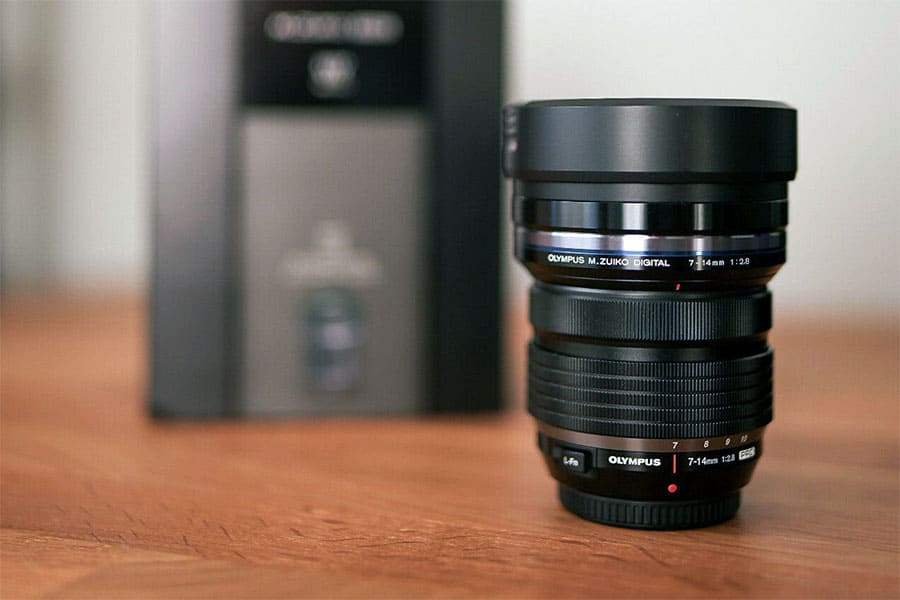
Since the Micro Four Thirds mount is standardized, you can be assured that the Olympus lens will work just fine on your Panasonic GH5.
According to Panasonic’s compatibility guide, all autofocus features of this lens work with the GH5.
Video users will also love the clutch mechanism built into the autofocus knob, allowing for smooth pull-focus shots.
Best Budget Wide-Angle Zoom – Panasonic Lumix G Vario 7-14 mm f/4.0
If low-light performance isn’t that important to you, then the Lumix G Vario 7-14 mm f/4.0 is the answer.
With a minimum f-stop of f/4.0, it works great for all sorts of travel or landscape applications.
It wouldn’t be my first choice for nightscapes, but as a carry-around lens for city and architecture shots, it’s an excellent lens for the price.
Notice also that it’s a bit wider than the Leica-branded 8-16 mm, which gives you a slightly wider field of view for less money.
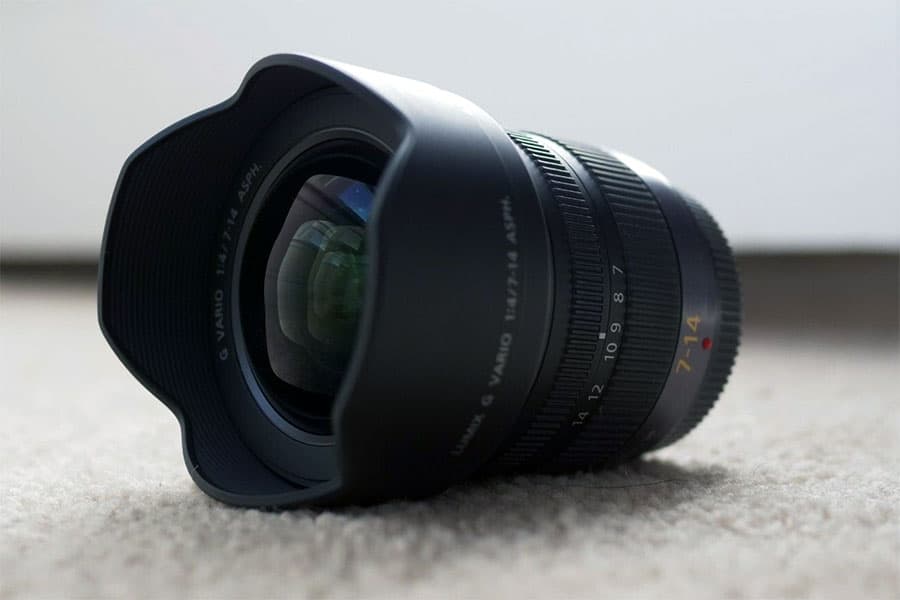
One interesting note about this lens is that it does not accept standard screw-on filters.
The front end of the lens has a molded-in lens hood.
If you need a zoom lens that accepts your polarizer or ND filters, look at the Leica 8-18 mm or the Olympus 7-14 mm above.
Best Fisheye – Olympus M.Zuiko Digital ED 8 mm f/1.8 Pro Fisheye (Diagonal)
I find diagonal fisheyes useful for landscapes and interiors when you need the maximum depth of field.
The problem with fisheye lenses is that they occupy a weird niche-they’re pretty specialized, and there aren’t many of them available.
The result is that a name-brand fisheye lens is costly.
If you need it, then you need it, but there are some cheaper options.
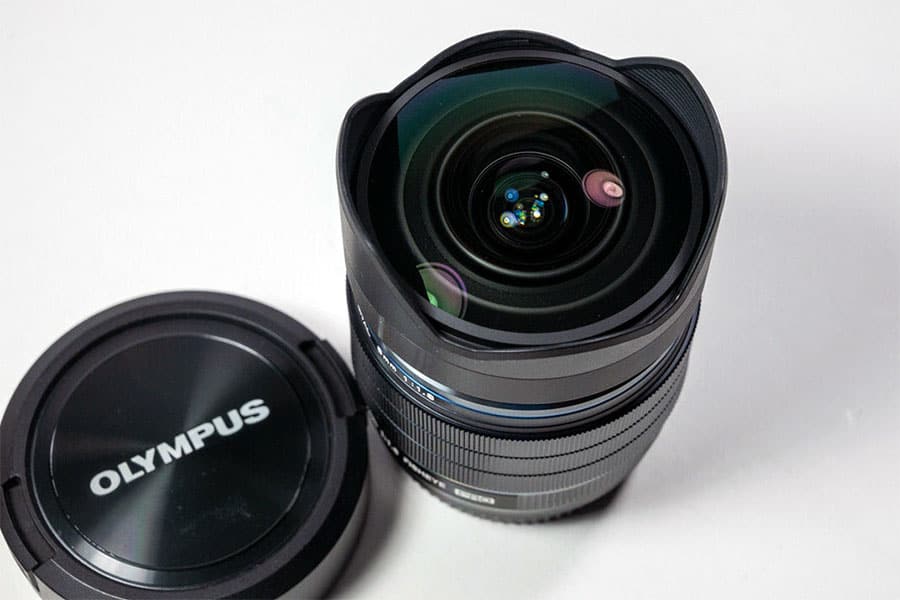
Both Olympus and Panasonic make 8 mm fisheyes.
The Olympus is the fastest by far, with their lens offering f/1.8 compared to Panasonic’s f/3.5.
Since they’re priced within a hundred dollars of each other, I’m not sure why anyone would choose the Panasonic.
Plus, the Olympus’s optical sharpness is impossible to beat; it’s a top-of-the-line piece of kit.
Budget Diagonal Fisheye – Samyang 7.5 mm f/3.5
For me, fisheyes are a lot of fun, but they aren’t worth dropping a grand on.
I certainly don’t need a fisheye lens to have all the cool autofocus and autoexposure toys.
For a quarter of the price of the Olympus 8 mm fisheye, you can pick up a fully-manual fisheye by Samyang. Are the optics and build quality as high-quality as the Olympus?
No, you get what you pay for.
But, the images are surprisingly sharp, and the lens is far from flimsy.
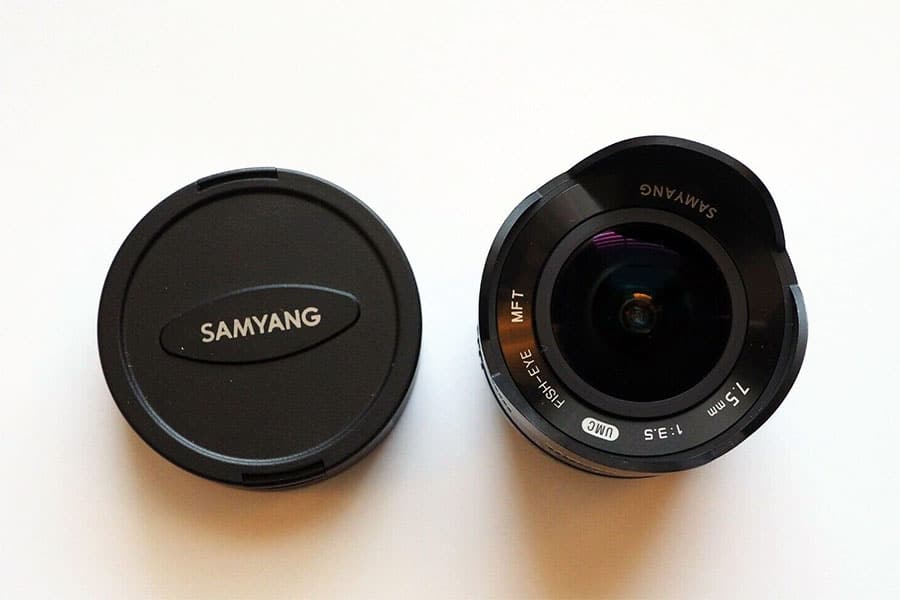
The Samyang isn’t nearly as fast as the Olympus, either.
But for the price, f/3.5 is respectable and gives you some limited low-light options.
Many people say that the sharpness of the Samyang lenses rivals the name brands.
I don’t know about that, but every example I’ve used has exceeded my expectations.
Fisheyes are toys for me. I love playing with them, but my shots are rarely award-winning favorites.
It’s handy to have one in your bag, and these inexpensive generic options allow everyone to carry one.
Circular Fisheye – Laowa 4 mm f/2.8 Circular Fisheye
Because of the sensor’s crop factor, there aren’t many options for a circular fisheye for the Micro Four Thirds Format.
This Laowa is one of the only options I know about, making it all the more impressive that this lens is under $200.
Like the Samyang, this off-brand lens is fully manual but features awe-inspiring optical clarity.
It features all-metal construction with excellent build quality.
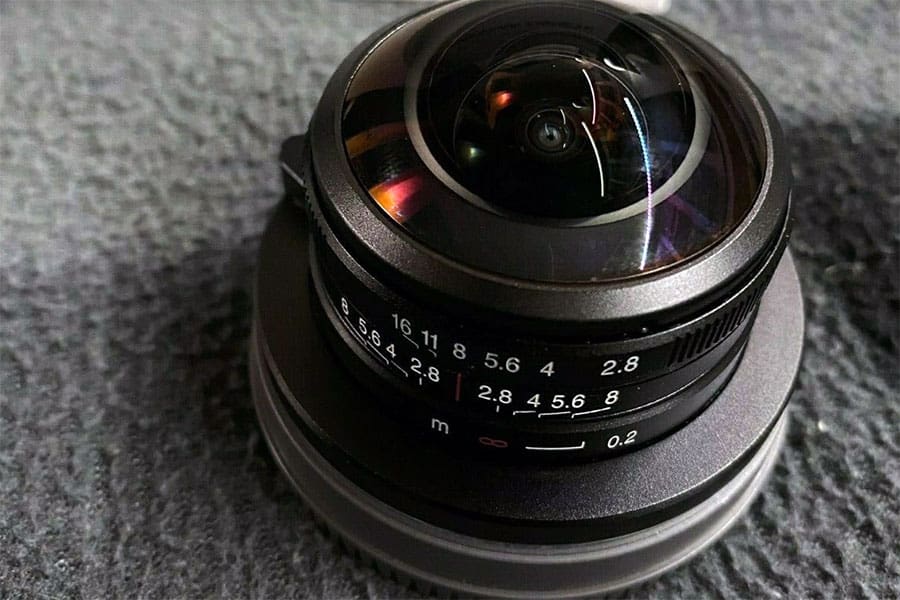
This lens has an impressive 210-degree field of view.
Even with great care, it’s easy to capture your tripod, feet, or even the fingers of your shooting hand in the frame.
But that overlap makes this lens phenomenal for stitching VR 360-degree photos.
Widest Rectilinear Prime – Laowa 7.5 mm f/2.0 Manual
Laowa makes a full-line of MFT lenses that are worth checking out.
Their 7.5mm happens to be my favorite pick for a wide-angle prime.
This lens is rectilinear, so there is little barrel distortion like fisheye lenses. It’s perfect for landscapes and architecture shots, and also real estate interiors.
And the wide f/2.0 aperture means that it’s handy to have for low-light conditions too.
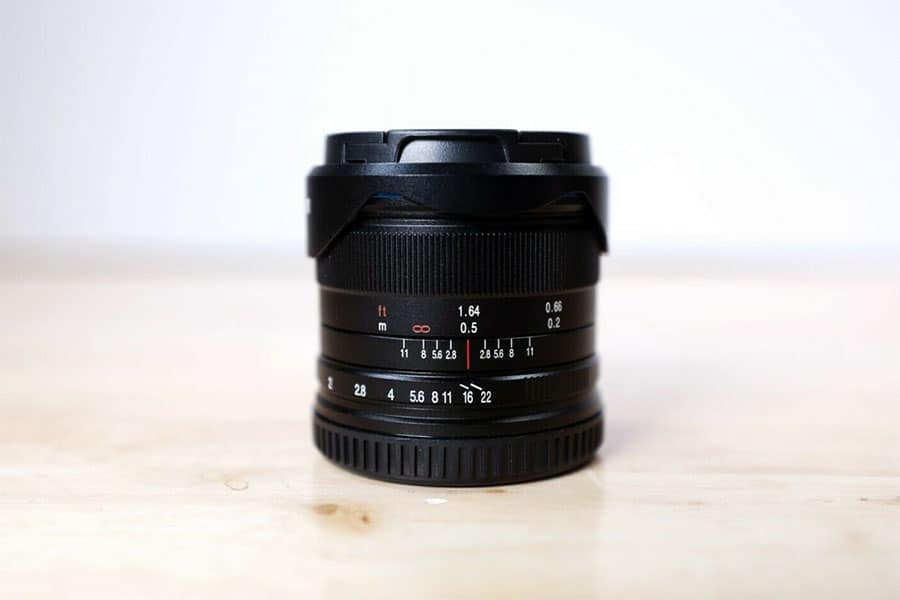
Like the Samyang and other Laowa models, this lens is manual focus with a manual aperture ring.
But lenses like this are easy to use on tripods, and I think they’re perfectly suited for so many applications.
If your regular lens doesn’t go wide enough and you’re looking for the cheapest way to get a wide and fast lens, you’ve got to check out this Laowa.
The 7.5 mm comes with a lens hood and accepts 46 mm screw-on filters. With such a wide field of view, you may want to consider stepping down a larger filter to avoid vignetting.
The company also makes a 9 mm f/2.8.
Fastest Manual Wide-Angle Prime – Voigtlander Nokton 10.5 mm f/0.95
No list of wide-angle lenses would be complete without listing the super-fast prime lens from Voigtlander.
At f/0.95, this lens is the fastest thing on our list by far.
The 21 mm equivalent focal length on the GH5 makes this lens wide but not excessively.
This lens is perfect for nearly all sorts of photography, from outdoor scenics to weddings and events.
Unless you sometimes need a super-wide or zoom, the 10.5 mm Voigtlander sits right in the sweet spot. But it’s also expensive, bulky, and fully-manual.
It’s a big piece of glass, but if you want the fastest and sharpest, it’s worth the price tag.
Wide-Angle on the GH5: Guide and FAQ

Who Needs a Wide-Angle Lens?
The classic example of a wide-angle lens connoisseur is the landscape photographer.
Many other photography types can benefit from wide lenses, but landscape photography is the perfect case study to understand these lenses.
They work in a variety of lighting conditions, and they want the maximum field of view in their images.
Most photographers start with a kit lens that came with their camera.
Like travel lenses, these are zooms with a comfortable range of focal distances from wide to magnified. But they don’t get extremely wide, just like they don’t zoom in very much.
I think one of the best ways to tell if you’d enjoy shooting with a super wide-angle lens is to ask yourself, how often have your kit lens not gone wide enough?
Are you happy with its minimum focal length, or are you always wishing you could zoom out farther?
As with all specialty types of lenses, there are trade-offs when you zoom out. The smaller the focal length, the more subject the image will be to lens distortions. Some of these can be dealt with digitally, be it via lens profiles in the camera or during post-production.
No matter what you do, wide-angle images are distorted. For many applications, like scenic landscapes or architecture, it works out ok. However, portraits can be very awkward, with objects near the frame’s edges looking entirely out of proportion.
Types of Wide-Angle Lenses
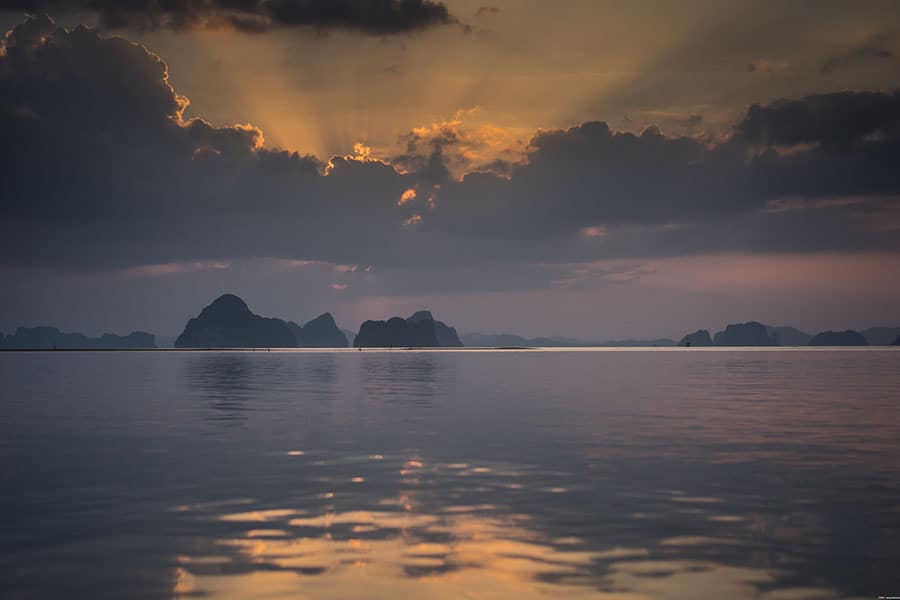
Starting from the widest to the least wide, wide-angle lenses can be broken down into several categories. Any of these lens types can be found in both zoom and single focal length prime lenses.
Circular Fisheye
Fisheye lenses are something of a niche; some people love them, and some hate them, but they have their place when understood.
A true circular fisheye lens projects an entire 180-degree field of view onto your flat image sensor.
The result is a circular image, meaning a black round frame left around your image.
The image does not fill the sensor.
Just like map projections create errors when translating the round earth onto a flat piece of paper, distortions appear in circular fisheye images.
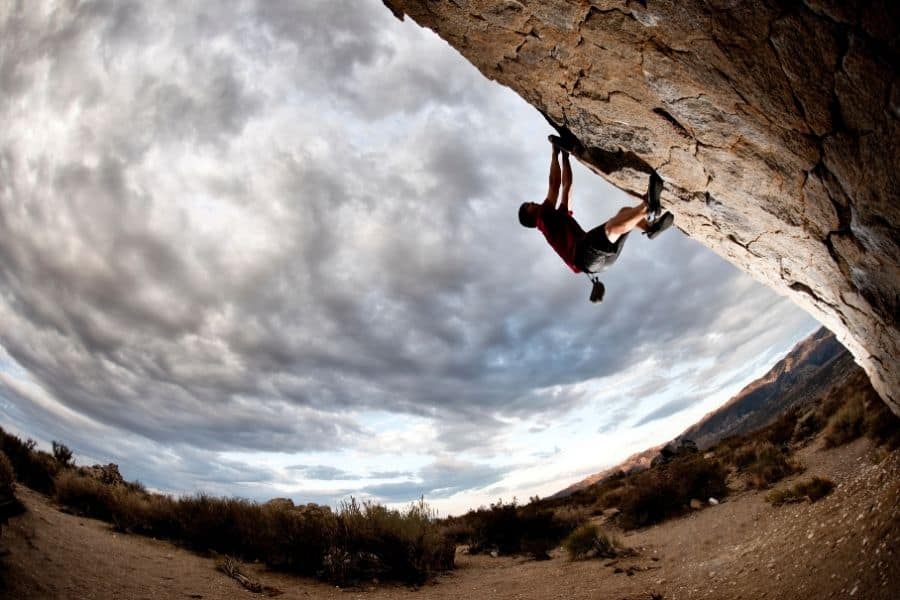
The biggest issue is called barrel distortion. What are actually straight lines in the real world are shown on your final image as curves. This type of lens is also called a curvilinear lens.
As you can imagine, this makes things look, well, a little odd. Like looking through a round fishbowl, circular fisheyes present a unique perspective.
There are a few modern photography techniques that rely on circular fisheyes. Many three-dimensional walk-through tours and virtual reality images are taken with circular fisheyes.
If you stitch two fisheye images together, each taken opposite of each other, there aren’t any gaps in a scene.
Diagonal Fisheye
A very similar lens is the diagonal fisheye, which still distorts the image but fills the frame.
The result is a super-wide-angle lens with an enormous field of view, but because it’s cropped in a bit, it doesn’t cover a full 180-degrees.
Sometimes called full-frame fisheyes, diagonals are a little more useful for photographers and videographers.
They still will present a distorted view of the world, with curved lines making up things that should be straight, but at least it fills your image frame.
The photograph’s edges are the most distorted parts of the diagonal fisheye, so it can be used very successfully in landscape photography and even in architecture with careful framing.
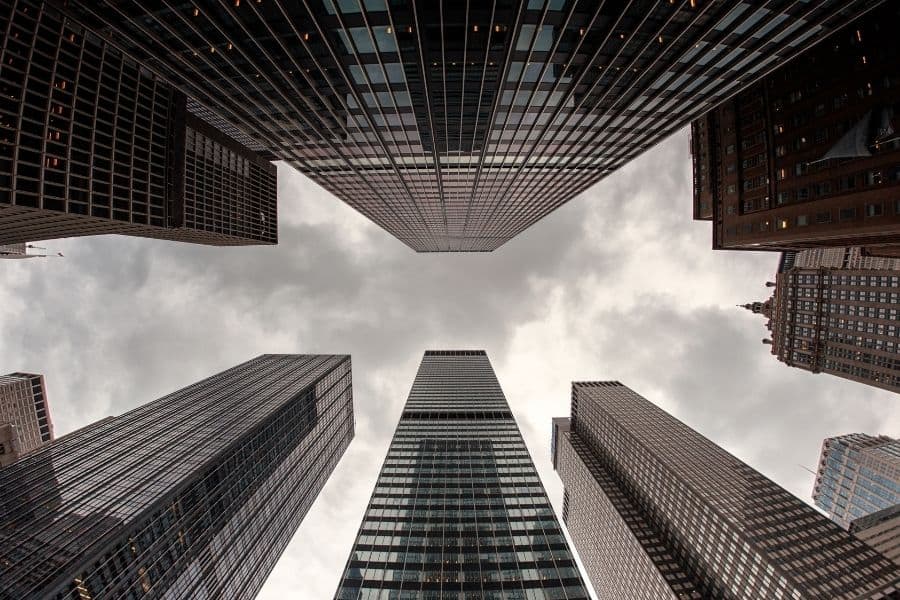
Rectilinear Wide-Angle Lenses
A standard lens that keeps straight lines straight is called a rectilinear lens. These don’t distort images in the same way, but they’re still distorted.
There are many different types of distortion that affect all optical lenses. But rectilinear lenses provide, by far, the most ordinary-looking images.
Benefits of Wide-Angle Lenses
Wide-angle lenses provide a few benefits.
The first is also the most obvious—they provide an enormous field of view. In the case of some fisheyes, the entire 180-degree half-sphere can be stored in one image frame.
Standard rectilinear lenses can still capture 100 degrees or more.
Having a field of view that big is great for capturing big scenes. Landscapes are one place you might use them, but they’re also instrumental in interior shots of small spaces.
With a wide enough lens, you can capture an entire room in one photo.
That’s helpful in architecture or real estate photography.
It’s also helpful at events where you need to snap pictures of large groups of people.
A less obvious advantage of having a wide lens is that it lets in more light.
By capturing such a broad expanse in its field of view, it’s also bringing more light to the sensor.
That means you can use them in lower light conditions, getting higher shutter speeds than you would with a longer focal length.
Low-light shooting is also aided by the fact that handheld shake is less of a problem. Usually, hand shake affects your images when your shutter speed’s denominator is less than your lens’s focal length.
For example, if you are shooting at 1/20th a second and shooting with a 50 mm lens, you will have a problem with hand shake.
But if you used a 20 mm lens, the hand shake would likely not be an issue.
It’s is for this reason that wide-angle lenses seldom come with optical image stabilization.
These systems are expensive, and they are best saved for long telephoto lenses.
The Panasonic GH5 uses both optical lens stabilization and built-in sensor stabilization, so even with wide unstabilized lenses, you will get some benefit from the sensor’s system.
Wide-Angle Lens Distortion
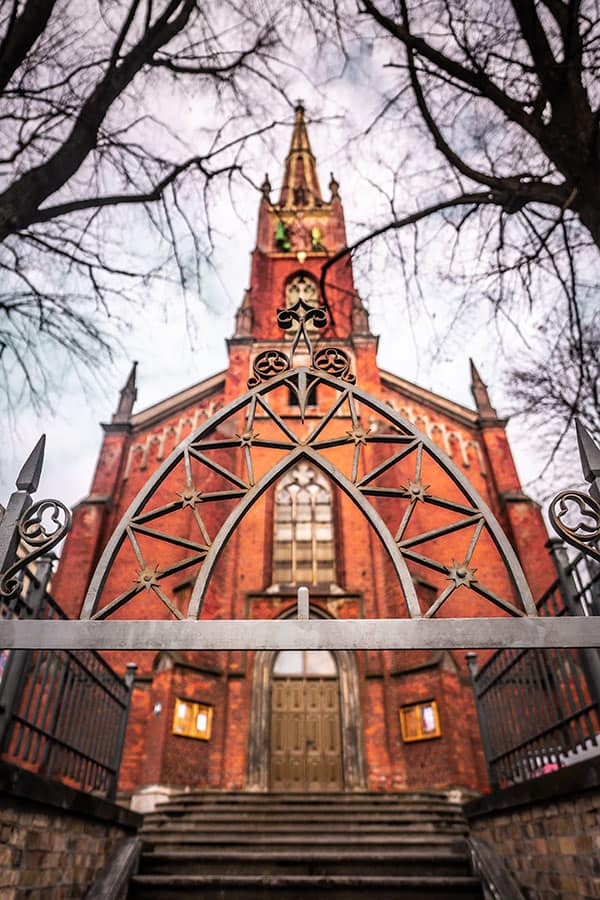
All lenses distort the final image in one or two ways. The first comes from the lens itself.
Does the lens alter the shape or presentation of lines in a way that is different than our eyes see the scene?
Fisheye lenses distort the scene dramatically, but even rectilinear lenses are subject to some barrel distortion.
Secondly, images can become distorted just by perspective.
This has nothing to do with the lens itself. If you stood in the same position as the image was taken, your eyes would see the same effect.
For example, if you shoot a picture from ground level looking up, a person’s feet and legs look huge, but their heads look small. Is this a problem with the lens?
No, that’s just perspective.
The problem with perspective distortion on images is that once on a two-dimensional paper or screen, the distortion looks much more apparent than it does in person. Our brains are used to seeing and correcting for that distortion for us.
But when we are confronted with it in printed form, it strikes us as odd-looking.
Fixing Distortions
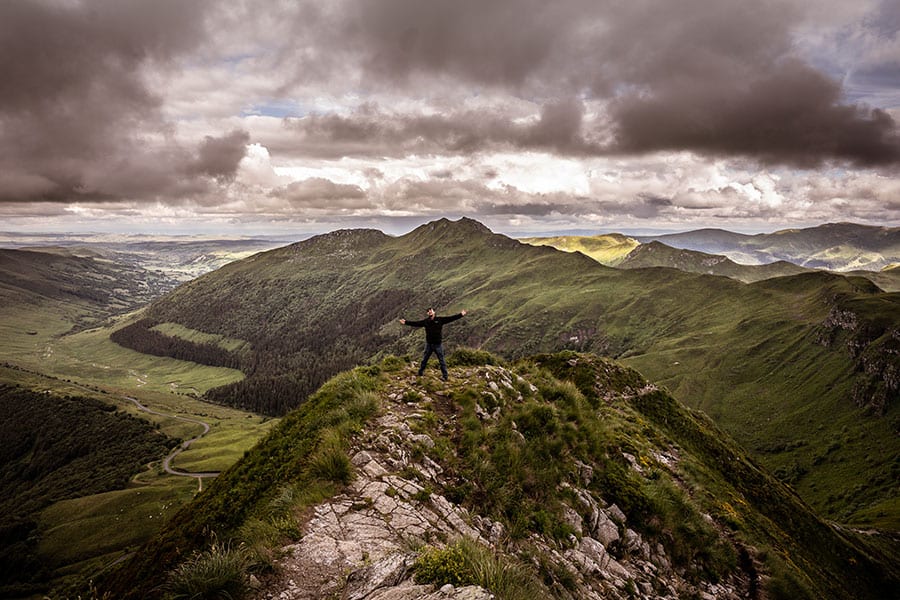
Photographers have three ways to deal with distortion issues. They can buy lenses that have the least amount of distortion, control the distortion that is present, or they can fix it digitally in post-production.
The first method relies on finding a lens that produces little distortion that you can afford.
This is hard to do, and the wider the lens you want to use, the harder it is to find a well-built example.
The best thing that I’ve found you can do is research specific lenses online and figure out which ones have the worst distortion.
Many photo-sharing websites allow you to search for images based on camera and lens models.
When dealing with distortion while you are shooting, the key is to know your lens.
Take a bunch of sample shots and see how it performs.
If you can find something with a geometrically perfect grid pattern to shoot, you will get an instant idea of where the problem areas lie.
Most lens distortion is worst at the edges of the frame.
Keep that in mind while shooting, and never place subjects at the edges.
Nearly all photo editing software packages have a lens correction feature.
In Lightroom and Photoshop, you can download or create a custom lens distortion profile and then have this profile automatically or manually applied to photos when you shoot with that lens.
Digital cameras have come a long way, technically speaking, from fully-manual SLRs and rangefinders.
But one thing has changed, which may not be for the better. Now that the lens is attached to a photo-taking computer, the makers have discovered that they can make up for faults right inside the camera.
Many kit lenses have terrible distortion, fixed in-camera by lens profiles to look perfect.
Prime or Wide Zoom for the GH5?
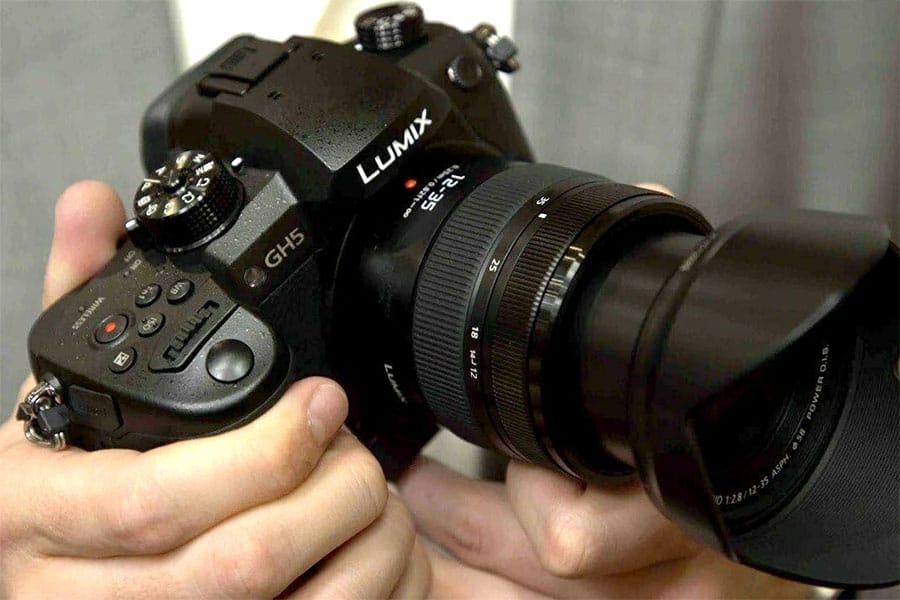
With any lens choice, photographers always have to choose between zoom and prime lenses.
With a wide-angle lens, it comes down to how many lenses you have in your kit and how many you want to carry around.
Do you want one lens that can do it all or several lenses to fit your needs?
When looking at wide-angle lenses, the ability to zoom between ultra-wide and normal wide may not be as useful as you think. For many photographers, a two-lens solution is the best choice.
You have your kit or everyday lens, which goes from a standard wide-angle into a light telephoto. The classic example is a 24 to 70mm lens.
From this starting point, you can expand your collection based on what you like to do most.
If you need a wide-angle lens for landscapes or real estate, you can add a wide-angle.
If you’re looking for a prime lens, you’d want something in the 12-18mm range. If you want a zoom, you want something that gets down to the 10-20mm range.
Most people don’t need a fisheye lens. It’s a specialty item that is fun to play with, but it’s usefulness in your everyday photo and video work is debatable.
Look for rectilinear lenses that provide a nice balance between field of view and minimum distortion.
Aperture
Like other lenses, the lens’s speed comes down not only to how wide a focal length it has but also to how wide the aperture can get.
Having a low f-stop number means that the lens’s inner iris can get wide, allowing lots of light in.
This is more easily accomplished in the design of a wide-angle lens anyway, so they are more likely to have fast f-stops already.
Buying a fast wide-angle is usually more about getting good low-light performance than it is about getting a shallow depth of field.
In portrait photography, you’re looking for a shallow depth of field to isolate your subject and create beautiful bokeh.
In wide-angle photography, even low f-stops produce relatively vast depths of field.
Unless an object is very near the lens, it’s unlikely that the depth of field will be noticeable.
Shooting with Fully Manual Lenses on the gh5
When looking at all of the wide-angle options available for the GH5, it will become apparent that you can save a lot of money by finding an off-brand, fully-manual wide-angle lens.
Several companies are making such lenses now.
Some are discount brands filling the market niche for entry-level glass, like Samyang, Rokinon, or Laowa.
These lenses can represent outstanding values for photographers looking to get ultra-wide-angle or fisheye lenses at a great price. Their optics don’t disappoint, and they are often fast too.
Others are premium brands that have been around for a long time, offering superior optics instead of digital toys.
Examples of those include Voightlander and Zeiss. These lenses are for discerning shutterbugs who want the very best of the best.
Manual lenses aren’t for everyone. Focusing is a lot less of a problem at ultra-wide focal lengths than with most other lenses. The GH5 has an outstanding focus peeking tool to help you nail it every time, too.
But the manual mode isn’t for everyone, and if you know you don’t want to do it or are annoyed by it, spend the extra money for a lens that you’ll like using.
Conclusion
There are many outstanding lenses available for the Micro Four Thirds format camera, and the interchangeability of the mounting system means a lot of options for GH5 photographers.
What’s your favorite use for wide-angle lenses, and which lenses do you prefer?

